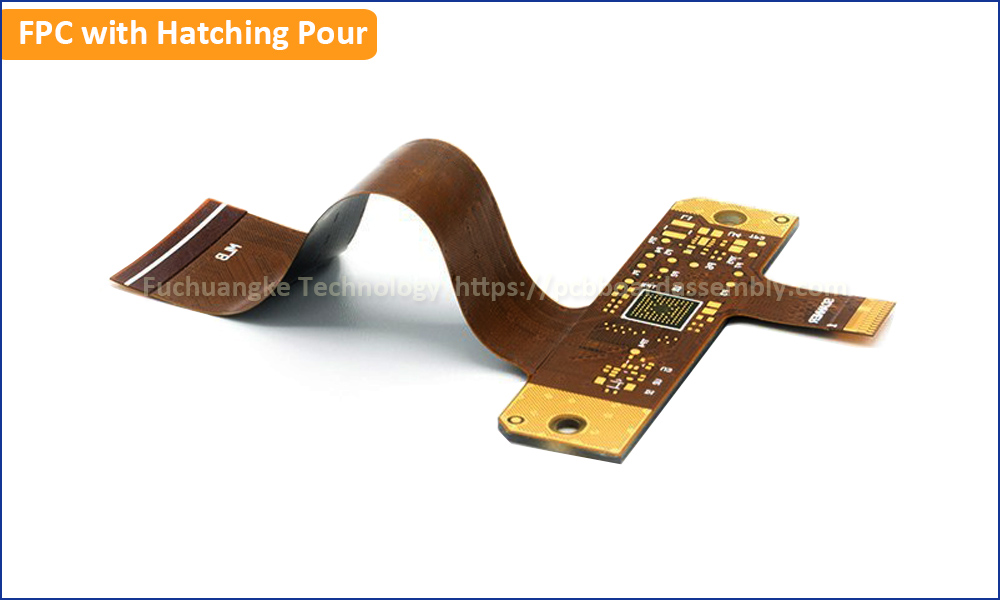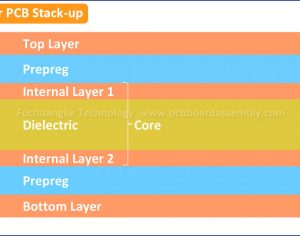Adhesiveless or Adhesive FCCL To Building Your Flexible Circuit?

Our Flexible Circuit Substrate Materials
Flexible circuit substrate materials fall into two general categories, adhessiveless and adhesive based FCCL (flexible copper clad laminate). As a leading quick-turn FPC and Rigid-Flex PCB manufacturer, we always stock both type FCCLs from Dupont, Taiflex, Shengyi and ITEQ. What’s adhesiveless material in flex circuit manufacturing? There is no adhesive in-between the copper and PI (or Kapton of Dupont). It’s obvious to understand when compare the common stock FCCLs as below. Thinner PI (/Kapton) FCCL has better flexible bending capacity. > or = 4mil PI (Kapton) FCCL are not commonly used. Except for special application, we can combine FCCL, adhesive and coverlay to reach the required FPC thickness.
| Adhesive FCCL | AdhesivelessFCCL | |||
|---|---|---|---|---|
| Cu | Adhesive | PI (/Kapton) | Cu | PI (Kapton) |
| 1oz | 0.5mil | 0.5mil | Hoz | 0.5mil |
| 1oz | 1mil | 0.5mil | 1/3oz | 1mil |
| Hoz | 1mil | 1mil | Hoz | 1mil |
| 1oz | 1mil | 1mil | 1oz | 1mil |
| Hoz | 1mil | 2mil | Hoz | 1mil |
| 1oz | 1mil | 2mil | Hoz | 2mil |
| Hoz | 1mil | 3mil | 1oz | 2mil |
| 1oz | 1mil | 3mil | Hoz | 3mil |
| – | – | – | 1oz | 3mil |
FPC Copper Pour Design
In Flexible Printed Circuit (FPC), copper pour refers to an area on a bare PCB filled with copper, which can be solid or cross hatched. One is called solid copper pour, and the other is called hatching pour, cross hatched copper., or cross-hatching. The copper pour here is used to make connections in PCB boards, improve the flexible bending capacity, and also can reduce the etching chemicals used during PCB manufacturing. In Rigid-flex PCB, the hatching pour design will reduce the warp or twist rate, and keep the board flat at most.
PCB designers today almost invariably use completely solid areas of copper pouring to act as ground layers that completely cover the remaining area outside those traces, pads and stand-off regions. While solid copper provides better resistive characteristics, cross hatched copper is used to balance the heat and dilatation on both sides of the board in order to avoid warping of certain substrate. Heating might cause gas bubbles between solid copper pour and certain substrates. Furthermore, it might be possible to adjust the impedance of high frequency traces by using hatched copper pour in order to reach better signal quality solid copper pour provides better resistive characteristics. In our Free DFM process, our professional CAM engineer will suggest where to add or change the solid copper to hatching pour.
FPC Flexible Bending Basics
Flexible printed circuit is widely used in many industry sectors for their unique physical property of flexible bending and extension to let the PCB to be made to fit in the limited of your electronic product or devices, but not make the device to conform with your PCB board when it is not a flexible circuit. The flexible bending will be affected by copper thickness, adhesive thickness, PI (/Kapton) thickness, and coverlay thickness. In many years FPC manufacturing experience, we get some basics as below.
- When the copper thicknesses are the same 1oz, the flexible bending with hatching pour is better than that with solid pour.
- When the adhesiveless FCCL are the same, the flexible bending with Hoz is better than that with 1oz.
- When one is adhesive FCCL and the other is adhesiveless FCCL. The flexible bending with adhessiveless FCCL is better than that with adhesive FCCL.
Quick Quote
Fuchuangke Technology is a leading turnkey PCB and assembly manufacturer in Shenzhen. Click the Quick Quote buttons below, you can turn to the different PCB quote pages. Just fill in the PCB specifications, upload Gerber files, BOM, Assembly Drawing and Pick-and-Place file, you will get quick quote of PCB board and PCB Assembly.
FR-4 PCB Quote Flexible PCB Quote Rigid-Flex PCB Quote IMS PCB Quote